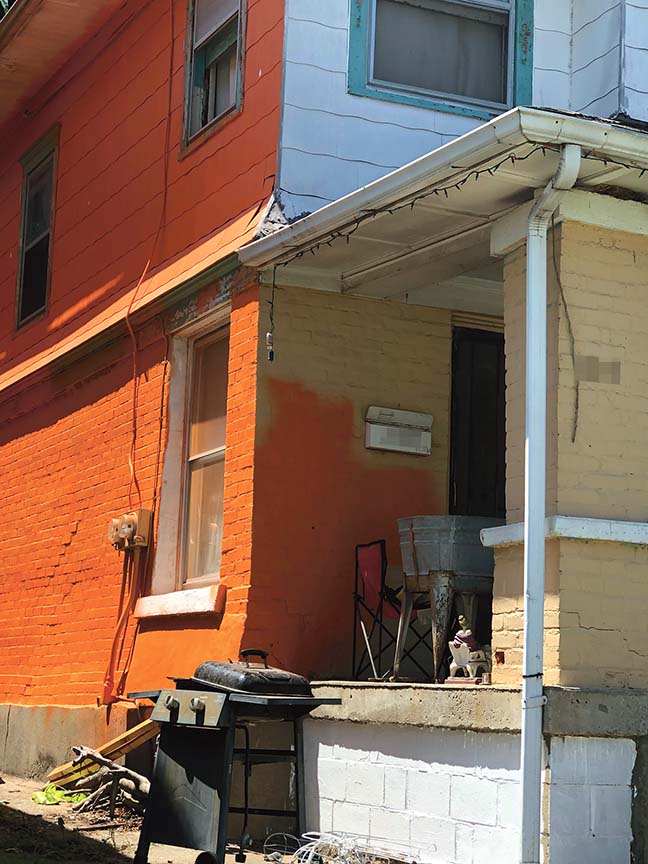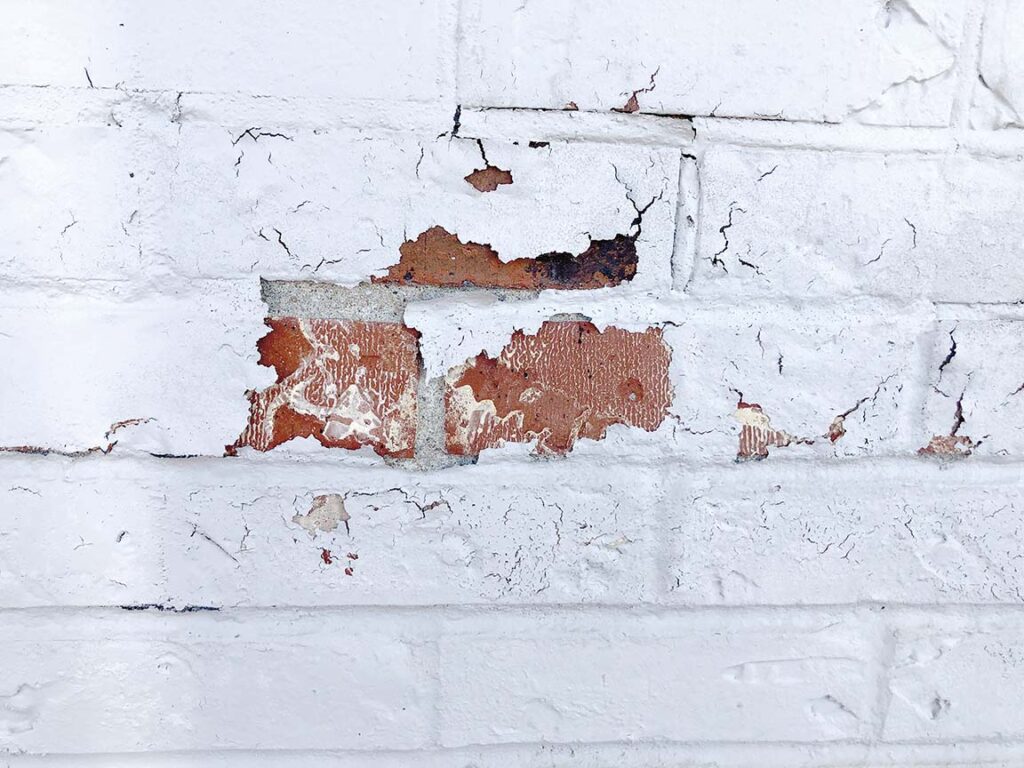
Dorri Partain
Contributor
Clay brick is a durable and fireproof building material that has been used to build permanent structures for centuries. Ancient Romans used bricks to build the roads to extend their empire northward, and following the Great Fire of London in 1666, brick was chosen for rebuilding due to its fire resistant properties.
The color of brick depends on the type of clay it’s formed from, so hues can vary from tan to dark brown, with the most common being red tones that appear during the firing of the brick when the clay contains iron oxides.
While many may appreciate the beauty of brick, with its various tones and surfaces, others may feel that brick facades need updating and will apply paint for a quick exterior refresh, which needs to be done with great care and consideration.
Brad Wolf, Historic Preservation Officer with Kansas City’s Landmarks Commission, recommends that owners of homes or businesses built before 1940 follow the guidelines set by the commission in the 1996 Urban Design Guidelines: “Do not cover brick with stucco or non-porous coatings. Because brick and stone are porous and “breathe,” sealants that block the transfer of water will eventually cause more problems than they solve.”
“Latex paint that would be appropriate for wood surfaces just isn’t right for brick,” Wolf said. “If someone wanted to use that, we would definitely advise against it.”

The Landmarks Commission oversees and reviews prospective changes to designated historic properties and districts listed in the Kansas City Register of Historic Places. Parts of the Scarritt Renaissance neighborhood and all of the Pendleton Heights neighborhood are listed as historic districts and would fall under those guidelines, which are based on the historic property guidelines set by the Secretary of the Department of the Interior’s Standards for Rehabilitation.
If a home or property sits within an officially designated historic district, the Landmarks Commission must approve, in advance, any alterations, including painting, that would be visible from the street, a process called a Certificate of Appropriateness.
“Depending on the condition of the brick surface, the commission might approve applying a sealant that was breathable that would protect the brick from further damage, but generally speaking, the commission would deny any all-over cover of paint,” Wolf concluded.
If the structure’s brick exterior was painted prior to being within the boundaries of an historic district, it would be excluded from following those guidelines, unless the property owner wanted to make other changes to the exterior, such as an addition, which would fall under the commission’s guidelines for additions and require the certificate to proceed with those alterations.
Alterations of a property’s exterior includes murals or signs, which must be approved by the Landmarks Commission, not so much for the design but for use of painting materials and placement.
For those properties not inside an historic district, local paint contractor and Northeast resident Jenna Wilkins of JW Quality Painting offers this advice:
“From my experience, painting brick is very doable if you apply the right primer first. Because masonry surfaces can have a high pH, especially the mortar in between bricks, you need to apply a concrete/masonry primer before painting to neutralize it so that the latex paint doesn’t have an adverse reaction or fail to bind to the brick. If you don’t use the correct primer, the paint will quickly begin to peel away from the brick.”
Color choice is another point to consider, Wilkins said.
“Painting brick is a good way to quickly change the color scheme of a house and it’s easily washable,” she noted. “However, once it’s painted, it’s very difficult to go back to brick. That’s probably why the historical society advises against it.”

Using the incorrect type of paint and application can cause a number of issues, from peeling paint to efflorescence and spalling when moisture gets trapped inside the brick. Efflorescence appears as a white, powdery or crystalline substance that contains salt, which is created as water evaporates, while spalling causes the surface of the brick to flake away along with the paint.
Property owners with questions about applying for a Certificate of Appropriateness and any questions about caring for original stone, wood or brick exteriors are welcome to contact the Landmarks Commission during regular business hours at 816-513-2901.


















